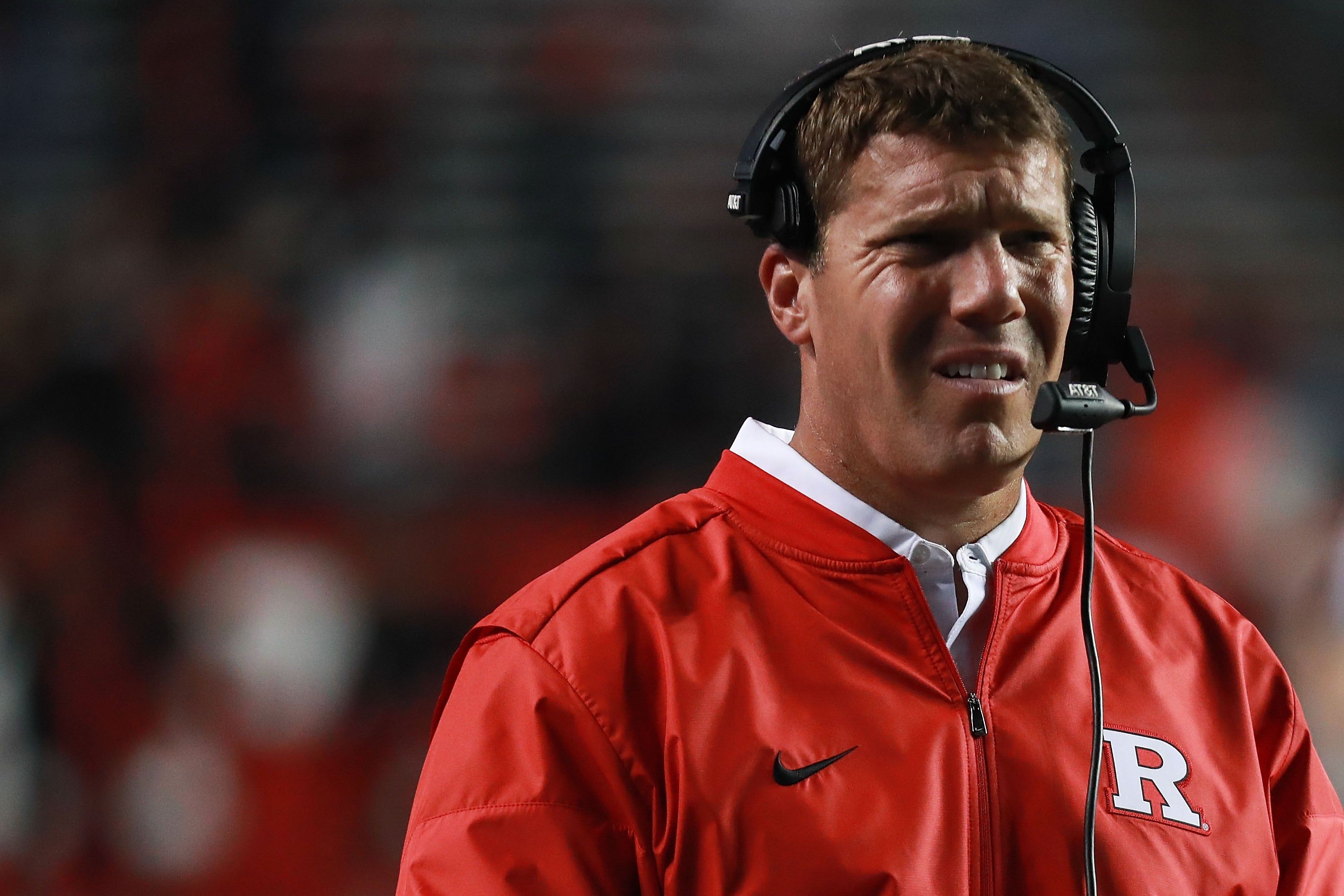USC & UCLA to B1G by 2024/Conference Expansion/TV contracts thread
- Thread starter Liontown
- Start date
You are using an out of date browser. It may not display this or other websites correctly.
You should upgrade or use an alternative browser.
You should upgrade or use an alternative browser.
In a related story the Big Ten will announce soon that Penn State will start all conference play at USC and at UCLA in alternating years, moving forward. Because the Big Ten is about tradition. And Penn State starting their conference play on the road is now.....a tradition.
Last edited:
It was a blazing hot day, but a great football game:
I am not a fan of ND and would prefer for them to get shutout of SEC and B1G.Sounds like the Big10 wants UW, Oregon, Stanford and ND to make 20, just what I am reading on twitter no link. UW and Oregon could be announced as soon as next week.
That being said, this is all about $ and a B1G with ND can command more $. With the USC/UCLA addition, adding Stanford may be just the last piece needed to get ND.
Son1 was interested in playing club lax if he got into UCLA. Their club league is pretty advanced, seems poised to take the D1 leap similar to Michigan a few years ago. Hear anything about lax?Notice of Privacy
triblive.com
I am not a fan of ND and would prefer for them to get shutout of SEC and B1G.
That being said, this is all about $ and a B1G with ND can command more $. With the USC/UCLA addition, adding Stanford may be just the last piece needed to get ND.
I'd love to see Notre Dame get screwed too, but the reality is that they can name their conference when/if they are ready to jump. And this move by the Big Ten is probably one of the largest to date in pushing the Irish to consider relinquishing independence in football.
So, let's just play this out - if it remains just USC and UCLA, which would make 16 teams (and I know there will be more, but just play this out).....
4 divisions
East - Penn State, Rutgers, Maryland.....Michigan State (because it means not facing OSU every year).
Lakes - Ohio State, Michigan, Indiana, Purdue
Midwet - Northwestern, Minnesota, Illinois, Wisconsin
West -Iowa, Nebraska, USC, UCLA
3 games vs. your division 2 from each of the other 3 divisions (Home and away), Total of 9 Conference games. Leving 3 games. Assume two G5 or whatever the hell is left over - so now a total of 11 games.
Best teams from each division play each other so there is 12 regular season games for the winners of each division. The other 12 teams play each other on the 12 week, similar to what the conference did for the 2020 Covid Year. So now all teams play 12 games.
The two winners of the four best teams meet in the CCG (which may now have to be in LA). So, that is the 13 game. The winner can go to the approrpaite bowl/playoff.
Logisitics is probably the biggest problem - teams have to move equipment and personnel around, but that can be managed.
Just a thought after a long week.
Edit - to ensure this, certain season ending games would have to move up a week to the 11th wek of the season - OSU/Michigan, the Lincoln Hat game, the Old Oaken Bucket Game, the Axe game, the Iowa/Nebraska Game and the Mayor's Cup between USC and UCLA.
4 divisions
East - Penn State, Rutgers, Maryland.....Michigan State (because it means not facing OSU every year).
Lakes - Ohio State, Michigan, Indiana, Purdue
Midwet - Northwestern, Minnesota, Illinois, Wisconsin
West -Iowa, Nebraska, USC, UCLA
3 games vs. your division 2 from each of the other 3 divisions (Home and away), Total of 9 Conference games. Leving 3 games. Assume two G5 or whatever the hell is left over - so now a total of 11 games.
Best teams from each division play each other so there is 12 regular season games for the winners of each division. The other 12 teams play each other on the 12 week, similar to what the conference did for the 2020 Covid Year. So now all teams play 12 games.
The two winners of the four best teams meet in the CCG (which may now have to be in LA). So, that is the 13 game. The winner can go to the approrpaite bowl/playoff.
Logisitics is probably the biggest problem - teams have to move equipment and personnel around, but that can be managed.
Just a thought after a long week.
Edit - to ensure this, certain season ending games would have to move up a week to the 11th wek of the season - OSU/Michigan, the Lincoln Hat game, the Old Oaken Bucket Game, the Axe game, the Iowa/Nebraska Game and the Mayor's Cup between USC and UCLA.
Last edited:
You guys are over thinking it. Would you LOVE to go to a State at ND game every 4 years or so? How about Oregon, or UCLA?
This is gonna be SO FUN!
This is gonna be SO FUN!
If we add Cal, Cal and Penn State can end season playing for The Sandy Cup! 

My nephew is playing LAX at Florida Institute of Technology and loves it there. Not the academic powerhouse that Big Ten schools would be, but he couldn’t realistically play LAX at that level (D1) because of his size.Son1 was interested in playing club lax if he got into UCLA. Their club league is pretty advanced, seems poised to take the D1 leap similar to Michigan a few years ago. Hear anything about lax?
If we add Cal, Cal and Penn State can end season playing for The Sandy Cup!

I guess this will end all of the desires for PSU to the ACC, right?


interesting fact: despite being announced a year later, as things now stand USC/UCLA will join the Big Ten before Texas/Oklahoma join the SEC.
Yes, that’s the silver lining.I guess this will end all of the desires for PSU to the ACC, right?

Very likely. This expansion is all about media dollars. UW and Oregon lock up the pacific NW (plus Nike $). Stanford locks up the Bay area market. Begrudgingly, ND brings their own set of eyeballs and allows them to keep their USC/ Stanford games plus gets them back to their traditional games of Michigan, MSU, Purdue, etc.Sounds like the Big10 wants UW, Oregon, Stanford and ND to make 20, just what I am reading on twitter no link. UW and Oregon could be announced as soon as next week.
Makes too much sense, so somebody will throw a wrench in things.
You need to stop thinking like a sports fan and start thinking like a business person. This expansion is all about media exposure dollars. Utah brings nothing to the table and Colorado not much more, although an argument for the Denver tv market might be made.Add four more to make it 20. Three more PAC teams and ND, or 4 more PAC teams (most likely Washington, Oregon, Utah, and Colorado). Have four 5 team divisions in the BIG (East: OSU, PSU, MD, Rut, and Indy; Mid East: Mich, Mich State, Purdue, Northwestern, Minnesota; Mid West: Nebraska, Colorado, Iowa, Wisconsin and Illinois; West: UCLA, USC, Washington, Oregon, Utah). Play division teams and rotating other division for 9 BIG games per year. Winner of West play winner of Mid West while winner of East plays winner of Mid East. Winners then play in conference championship.
You need to stop thinking like a sports fan and start thinking like a business person. This expansion is all about media exposure dollars. Utah brings nothing to the table and Colorado not much more, although an argument for the Denver tv market might be made.
Yeah. The reason the Pac-12 is collapsing is because (relatively) no one watches their games. You don't wholesale take a bunch of teams from a failing conference; you cherry pick the few that actually have high value. At this point, the only Pac-12 teams that have value on their own to the Big Ten (or SEC if they ever looked to expand there) are Washington and Oregon. Stanford has some value as a partner for Notre Dame but not that much on their own. All the other Pac-12 schools are pretty much worthless to the Big Ten or SEC (and Oregon St and Washington St are probably kinda worthless even to the Pac-12).
San Fran is the 6th largest TV market Phoenix is 11 Seattle is 12.You need to stop thinking like a sports fan and start thinking like a business person. This expansion is all about media exposure dollars. Utah brings nothing to the table and Colorado not much more, although an argument for the Denver tv market might be made.
San Fran is the 6th largest TV market Phoenix is 11 Seattle is 12.
TV markets don't matter if no one in them is watching the team in question. The Bay Area isn't big for sports in general (relatively to the metro size), but Stanford and Cal are complete after thoughts there.
If people in the Pac-12 markets actually watched the teams of the conference, then it wouldn't be imploding by losing its most important teams to a conference 2 time zones away. No one in the Pac-12 outside of Washington or Oregon has any value to the Big Ten or SEC (except maybe Stanford if they can help to grab Notre Dame, but not on their own value). The Big Ten would laugh at the idea of inviting Colorado or Utah to the conference. Talking about them is just like the ludicrous talk of the Big Ten going after Iowa St or Kansas or Oklahoma St after Texas/Oklahoma jumped.
As I mentioned in another post, if ASU was AAU, they would be a no brainer. Unfortunately they are not.San Fran is the 6th largest TV market Phoenix is 11 Seattle is 12.

It's All Over Early for USC, 38-14 : College football: Trojans are overpowered by Penn State, which scores almost at will in taking a 35-0 halftime lead.
For USC's football team, all the optimism generated by a season-opening victory evaporated in the space of nine minutes Saturday in a place called Happy Valley.
As I mentioned in another post, if ASU was AAU, they would be a no brainer. Unfortunately they are not.
Nah. ASU isn't good enough in either football or basketball to warrant consideration. They do have some fans and a huge alumni base, but they aren't a "name" that would drive casuals to watch them.
I've watched the Pac 12 at least 15 years late until 2 A.M. Stanford and Cal have really dropped off in attendance the last 3-4 years. USC & UCLA are smart enough to notice , Oregon than maybe Washington are the next best options.San Fran is the 6th largest TV market Phoenix is 11 Seattle is 12.
To piggyback onto what you are saying, the Bay Area is a large TV market with a lot of income but football fans in that region do not care about Stanford. It is all NFL with the 49ers and even some Raiders although they are gone. Your average football fan does not connect to a small/mid-sized private university, attend their games or even care if they win or lose. It's like saying your average New Yorker follows Rutgers football, maybe less so.Yeah. The reason the Pac-12 is collapsing is because (relatively) no one watches their games. You don't wholesale take a bunch of teams from a failing conference; you cherry pick the few that actually have high value. At this point, the only Pac-12 teams that have value on their own to the Big Ten (or SEC if they ever looked to expand there) are Washington and Oregon. Stanford has some value as a partner for Notre Dame but not that much on their own. All the other Pac-12 schools are pretty much worthless to the Big Ten or SEC (and Oregon St and Washington St are probably kinda worthless even to the Pac-12).
Getting USC does not make path any easier for CFP. We will probably play 5 teams with equal or better talent now (USC, UM, OSU, MSU, UW) plus usual brutal IA game with superior coach. UCLA won't be a cake-walk either with talent rich CA and now Chip Kelly. I wish we could leave for ACC with ND. Look at Clemson model, play one major marquee name in first two games. Win or lose, plenty of time before CFP. Feast on Pitt, NCST, BC, Wake, UNC, SU, GA Tech, with vastly less talent. Play maybe one of good but reeling programs in FLST, Miami, VT at some point. That is no gauntlet. I know it will never happen but this is getting too damn competitive.
Last edited:
Absolutely. Arrogance is off the charts. I remember 2009 Rose bowl and USC fan next to us said 'Penn State looks like a nice little team". We got smoked. Hard to argue but f-in cheaters.All I know is that the USC fans at the Rose Bowl were really **** people. All my willpower not to kick the crap outta a handful of them.
Exactly. The mania over "TV market size" is, in and of itself, so not relevant.TV markets don't matter if no one in them is watching the team in question. The Bay Area isn't big for sports in general (relatively to the metro size), but Stanford and Cal are complete after thoughts there.
If people in the Pac-12 markets actually watched the teams of the conference, then it wouldn't be imploding by losing its most important teams to a conference 2 time zones away. No one in the Pac-12 outside of Washington or Oregon has any value to the Big Ten or SEC (except maybe Stanford if they can help to grab Notre Dame, but not on their own value). The Big Ten would laugh at the idea of inviting Colorado or Utah to the conference. Talking about them is just like the ludicrous talk of the Big Ten going after Iowa St or Kansas or Oklahoma St after Texas/Oklahoma jumped.
As you point out, what matters is how many sets will tune in to watch Teams A and B play football - no matter where the teams are from, or where the sets are located.
Otherwise, Rice would be a heavily desired addition to the SEC, and Rutgers to the B10. How dumb would that be? (Oops).
College football TV ratings, 2021 edition - Sports Media Watch
,
Last edited:
If Oregon, Washington, and Stanford join and the B10 goes to 4 divisions, how about semi final games in place of the conference final (early December) and then the conference final is the Rose Bowl? Winner goes the national championship vs whatever massive conference the SEC ends up being.
TV markets don't matter if no one in them is watching the team in question. The Bay Area isn't big for sports in general (relatively to the metro size), but Stanford and Cal are complete after thoughts there.
If people in the Pac-12 markets actually watched the teams of the conference, then it wouldn't be imploding by losing its most important teams to a conference 2 time zones away. No one in the Pac-12 outside of Washington or Oregon has any value to the Big Ten or SEC (except maybe Stanford if they can help to grab Notre Dame, but not on their own value). The Big Ten would laugh at the idea of inviting Colorado or Utah to the conference. Talking about them is just like the ludicrous talk of the Big Ten going after Iowa St or Kansas or Oklahoma St after Texas/Oklahoma jumped.
College football TV ratings, 2021 edition - Sports Media Watch
,
Exactly. The mania over "TV market size" is, in and of itself, so not relevant.
As you point out, what matters is how many sets will tune in to watch Teams A and B play football - no matter where the teams are from, or where the sets are located.
Otherwise, Rice would be a heavily desired addition to the SEC, and Rutgers to the B10. How dumb would that be? (Oops).
Some more detailed data as it pertains to Delaney's Folly:
Total viewership for all nine of Rutgers' conference games in 2021:
6.16 Million. Under 700,000 per game.
Nearly 80% of that for their games against Michigan, OSU, and Penn State. When they were not playing PSU, Michigan, or OSU - an average of about 300,000 (About the same number who watched Buffalo take on Coastal Carolina in a Noon start on ESPN2. Maybe the Big Ten should have added Buffalo, to get that NYC market locked down?)
No one, in NYC, or anywhere else, turns on the TV to watch Rutgers.
FWIW: Rutgers' "expansion partner", Maryland, a very non-premiere program, in a smaller and more geographically competitive market, drew about 70% more eyeballs per game than Rutgers.
Penn State, FWIW, drew just under 39 million (and had only about 10% of their typical viewership when they played Rutgers)
Ohio State drew just under 52 million (and only had about 20% of their typical viewership when they played Rutgers)
Michigan drew just over 50 million (and only had about 45% of their typical viewership when they played Rutgers)
Rutgers not only doesn't provide any viewers, they significantly decrease viewership by dragging down the desirable programs when they have to schedule Rutgers.
It is what it is.
College football TV ratings, 2021 edition - Sports Media Watch
,
It's not about viewers per game ... it's about getting the Big Ten Network on more cable packages ...

Deadspin | The Big Ten Got Exactly What It Wanted In Rutgers
Deadspin | The Big Ten Got Exactly What It Wanted In Rutgers
 deadspin.com
deadspin.com
By signing on Rutgers, the conference’s lucrative television network was able to lock down deals with Comcast, Time Warner Cable, and Cablevision, bringing the Big Ten Network, which is majority owned by Fox, to basic packages in the New York and New Jersey markets. The expansion to the Tri-State area, as well as Washington, D.C., was tagged with a $1 subscription fee for customers—up from the normal 44 cents. With Maryland and Rutgers games being broadcast in the two markets, viewership increased from 52 million to 60 million in a year’s time, per the Baltimore Sun. More viewers, more ads—going for $4,000 per 30-second slot—and ultimately, more money. The conference’s payout from its Cablevision deal alone was up nearly $18 million in 2015, totaling $31.7 million, according to AdAge.
I'm not flying out to the west coast to watch a football game, unless one of my kids is playing in it. I have things to do. And a TV.You guys are over thinking it. Would you LOVE to go to a State at ND game every 4 years or so? How about Oregon, or UCLA?
This is gonna be SO FUN!
When did they move South Bend, Indiana to the west coast?I'm not flying out to the west coast to watch a football game, unless one of my kids is playing in it. I have things to do. And a TV.
Very interesting! As a Portland resident, I am excited (although not sure how often PSU would play here).Washington and Oregon have applied to join. BIG says it’s waiting for a response from ND before adding anyone else per Dennis Dodd.
Oh, right, all that money the cable companies paid the Big Ten - as a result of adding a team that no one watches (and that actually decreases viewership). Mea culpa, I should have remembered that.It's not about viewers per game ... it's about getting the Big Ten Network on more cable packages ...

Deadspin | The Big Ten Got Exactly What It Wanted In Rutgers
Deadspin | The Big Ten Got Exactly What It Wanted In Rutgersdeadspin.com
By signing on Rutgers, the conference’s lucrative television network was able to lock down deals with Comcast, Time Warner Cable, and Cablevision, bringing the Big Ten Network, which is majority owned by Fox, to basic packages in the New York and New Jersey markets. The expansion to the Tri-State area, as well as Washington, D.C., was tagged with a $1 subscription fee for customers—up from the normal 44 cents. With Maryland and Rutgers games being broadcast in the two markets, viewership increased from 52 million to 60 million in a year’s time, per the Baltimore Sun. More viewers, more ads—going for $4,000 per 30-second slot—and ultimately, more money. The conference’s payout from its Cablevision deal alone was up nearly $18 million in 2015, totaling $31.7 million, according to AdAge.
It was a blazing hot day, but a great football game:
I was at that one, on crutches after a bad ankle sprain (could have been broken, I didn’t have insurance and never got it looked at. Still swollen to twice the size of my other). Great, though sweaty, game.

